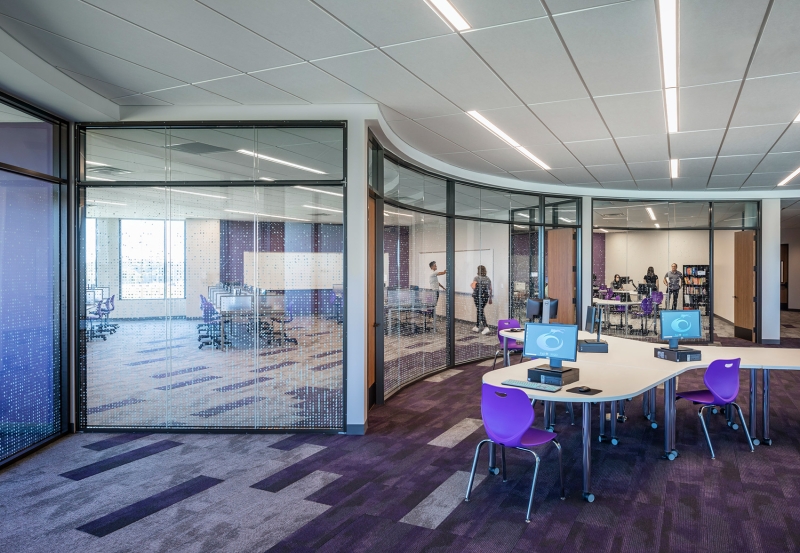
Now, more than ever, schools are looking at their spaces differently
Prior to COVID-19, classroom overcrowding and a lack of flexible non-classroom space was a common complaint in schools, particularly those designed with a more traditional pedagogical approach. Now that schools are looking more closely at their spaces – where students can go and how many can safely occupy various spaces – they need tools to effectively and correctly identify these spaces and calculate their capacity. A detailed space utilization and capacity study can inform these decisions and help schools make larger choices about renovations, expansions, and/or schedule changes. According to Page Strategic Consultant Sheri Offenhauser, many schools already have enough space and simply need guidance on how to use it more effectively.
As a first step, Sheri and the Page team use school data and 21st-century learning environment benchmarks to calculate the functional capacity of an institution. She explains that often, schools operate under the policy of “adjust as necessary” as issues develop. Additionally, administrations often don’t re-examine their spaces after the initial programming and design. Rather, they typically alter the spaces slightly many times throughout the years until the original purpose is lost, leading to either over- or under-utilization of spaces and loss of understanding of actual program capacity.

Identifying opportunities to save cost or add space
A space utilization study can also help schools identify increases in overall program capacity if buildings are inconsistently used. This can yield cost-saving opportunities such as space consolidation or closure. Additionally, as schools move to expand CTE courses or consider adding specialized courses to the curriculum, a space utilization and capacity study can help administrators identify existing spaces that are currently not programmed for educational use, which can be adapted to increase capacity without adding additional square footage.

Helping schools plan for tomorrow
Page’s Strategic Consultants help each academic institution identify and measure educational and support spaces against state / local standards or best practice benchmarks to see how their spaces measure against similar institutions with similar pedagogical approaches. However, they remind clients that metrics are determined by school schedules and individual facility visions and goals, so no two schools are alike in their data or in their ultimate goals. The outcomes yielded from these studies often help schools in both current and future planning.
To learn more about the work Sheri and her colleagues do in the education arena, watch a video of her remarks at the 2021 Building Solutions HPC (High Profile Client) Retreat by clicking here.
About Sheri Offenhauser
She is a graduate from New York University and the University of the Texas Austin with ten plus years of experience in program management, education, and data analysis. Her broad expertise in mathematics and leadership has led her to high leadership positions such as the Chair of the Mathematics Department and the Director of the Engineering, Math, and Science Institute, both at the Kinkaid School. Currently, she is a Strategic Consultant at Page and an Accredited Learning Environment Planner (ALEP) and continues to add to her strong background.
